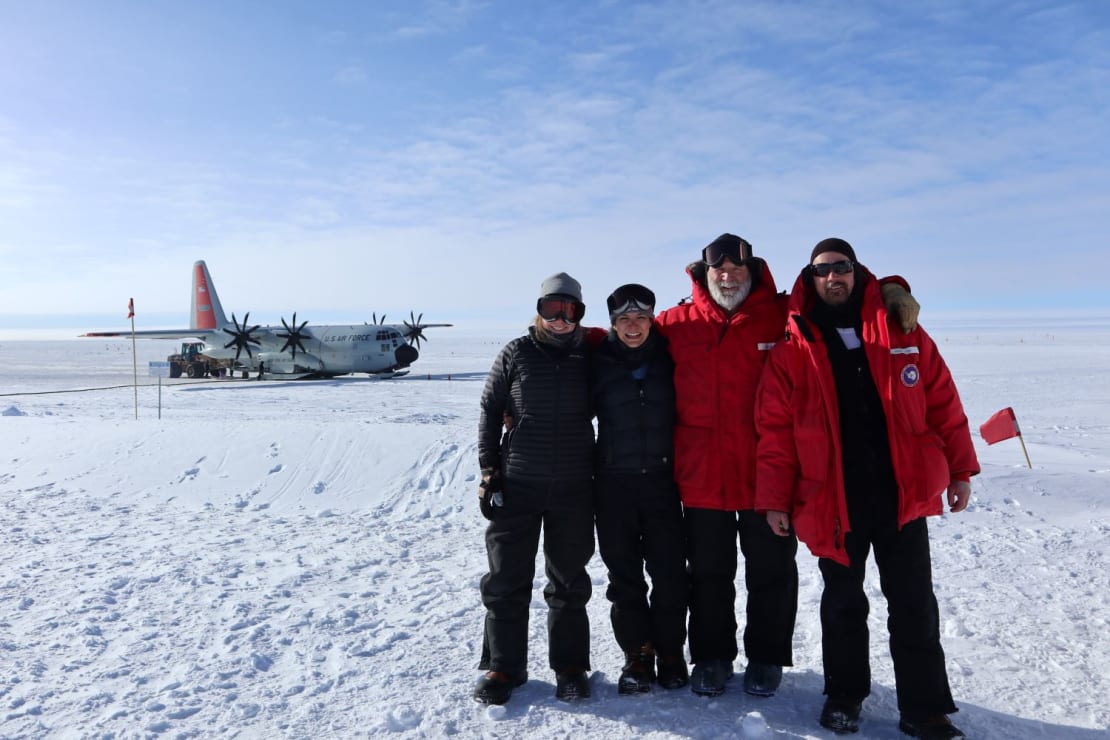The IceCube Upgrade project is an international collaboration made possible not only by support from the National Science Foundation but also thanks to significant contributions from partner institutions in the U.S. and around the world. Our national and international collaborators play a huge role in manufacturing new sensors, developing firmware, and much more. Learn more about a few of our partner institutions below.
Chiba University is responsible for the new D-Egg optical detectors, 300 of which will be deployed on the new Upgrade strings. A D-Egg is 30 percent smaller than the original IceCube DOM, but its photon detection effective area is twice as large thanks to two 8-inch PMTs in the specially designed egg-shaped vessel made of UV-transparent glass. Its up-down symmetric detection efficiency is expected to improve our precision for measuring Cherenkov light from neutrino interactions. The newly designed flasher devices in the D-Egg will also give a better understanding of optical characteristics in glacial ice to improve the resolution of arrival directions of cosmic neutrinos.

DESY is developing the mDOM with their partners from the University of Münster, FAU Erlangen–Nürnberg, and UW–Madison. The mDOM is an optical module that contains 24 three-inch PMTs arranged to provide uniform sensitivity and directional resolution of incoming photons. mDOM production will happen at DESY and Michigan State University, with about 400 mDOMs to be deployed in the Upgrade project. Furthermore, DESY is responsible for managing a work package for the new sensors and developing several electronics components for the project.
As part of its commitment to the IceCube Upgrade, Michigan State University will provide the main cables that connect the sensors and calibration devices embedded in the Antarctic ice to the readout electronics and computers on the surface. MSU is also establishing an optical module production facility to build mDOMs for the Upgrade project and development and testing facilities for the optical sensors, cables, and readout electronics that will be deployed at the South Pole.

Pennsylvania State University is contributing electronics and firmware. Situated in the heart of the data path, the firmware will manage the complex flow of information inside each new optical sensor. PSU is also contributing detector optimization for tau neutrino appearance. Earlier this year, IceCube made the first oscillation measurement of the elusive tau neutrino. With the data from the new and enhanced sensors to be deployed with the IceCube Upgrade, scientists will be able to explore the tau sector in greater detail than ever before, which may even reveal hints toward new physics.
At the University of Alabama, Professor Dawn Williams serves as the Level 2 lead for calibration and characterization for the IceCube Upgrade. One of the major goals of the Upgrade is to deploy new calibration devices in order to improve our understanding of the optical properties of the ice. The new calibration data will be applied to the entire archival IceCube data set and will improve our sensitivity to atmospheric tau neutrino appearance, increase angular resolution of astrophysical cascade-type neutrino events, and improve resolution of astrophysical tau double cascade events. Sungkyunkwan University, TU Munich, UW–Madison, RWTH Aachen, DESY Zeuthen, and Chiba University are developing calibration devices for the Upgrade.
The University of Wisconsin–Madison serves as the IceCube Upgrade project office, overseeing overall project management, project financial controls, engineering, quality, safety, logistics, and outreach and communications. In the realms of drilling and deployment, UW–Madison is refurbishing existing IceCube drilling and deployment infrastructure as well as contributing to the development of D-Egg and pDOM data acquisition electronics, mDOM high-voltage design, and R&D sensors. UW–Madison will also be working on surface data transport electronics and infrastructure, a standalone calibration device, and software development to support integration of new sensors.

Find the press release here.
A multimedia gallery is available here.